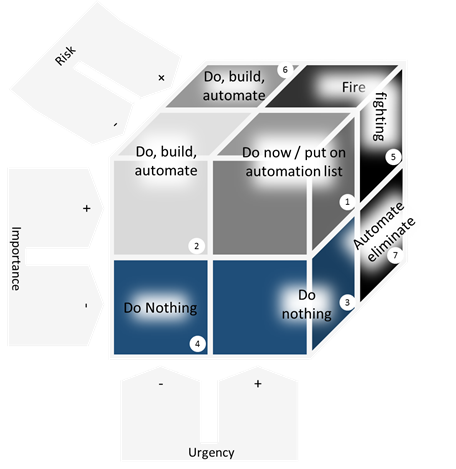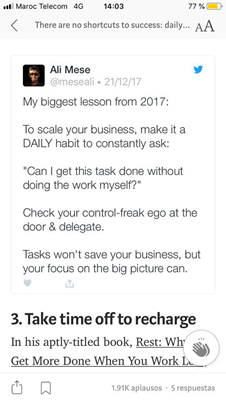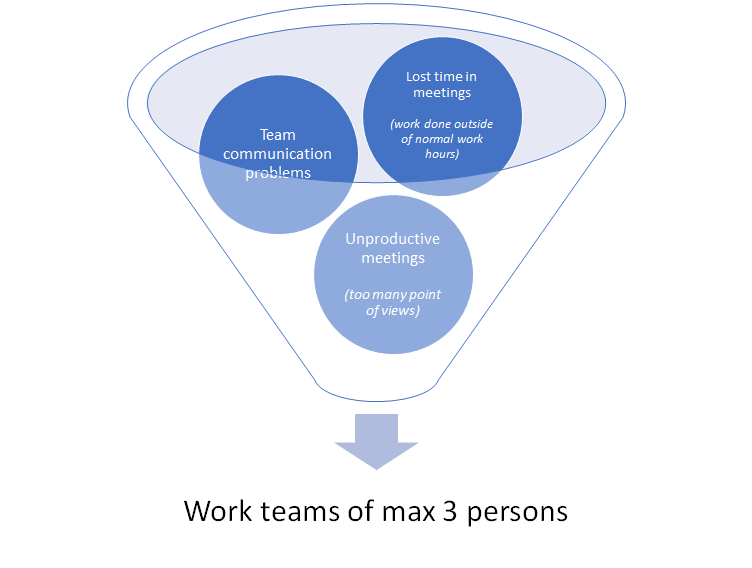…And here’s why you should adopt it too
A few weeks back I was lucky enough to go on a detox & meditation retreat in India. What a treat! I checked in stressed and with ubiquitous fatigue, 6 days later I left energized and ready to rock!
As part of the program, we had evening talks or videos on nutrition and positive psychology. While I was watching absentmindedly one of the videos, my attention got caught as the speaker (Dr. Wayne W. DYER) went off topic (at least this is how it felt to me). He was talking about Monarch Butterflies?! In an attempt to connect the dots, I started distinguishing a few words. In a nutshell, here is what he was describing.
Those butterflies are as tiny as a butterfly could be, they have a tiny brain the size of the tip of a needle, their wings are as thin as toilet paper. So what? Well, you need to know that the Monarch Butterflies are able to travel 4’000 miles. No way?! And it’s a round trip. Noo waay??!! And they are able to come back to the same location, tree, and even branch. Nooo waaay???!!! How come such tiny and apparently insignificant beings, with a close to microscopic brain and toilet paper like wings can do that?!
Well, the only 2 persons on earth I know to have the answer are… Jason Fried & David Heineman; Basecamp philosophy is all about useful minimalism. ☺
The romantic way to describe Basecamp is the « Monarch Butterfly Company ». The less romantic way is that they are the only company, I know, that uses the TM3 (Time Management Cube). And they’ve been hugely successful managing approximately 300K pay customers, generating yearly revenues of $170M employing only 50 employees none of which works above 40 hours a week!
Their secret lies ahead. So bear with me.
BY THE WAY, WHAT IS THE TM3?
It’s the Time Management Cube.
How is it different from the Time Management Matrix (or Eisenhower Method)?
- It’s an evolution of the Time Management Matrix, on top of distinguishing between Urgent & Important matters it adds a 3rd dimension of « risk ».
- Time Management Matrix focuses on working proactively to avoid having elements fall under the Urgent quadrant. TM3 key principle of action is task elimination.
- It’s better adapted to companies rather than individuals. For example, it is more actionable for a company to put in place a restricted meeting policy to increase productivity than for one individual to go against the way the whole company functions.
WHAT’S THE USE?
In a nutshell, the « urgency » axis stays as is while the « importance » axis is split in two. The clear benefit is to distinguish between real important elements that will contribute to the strategy and grow the business and other elements that we do out of obligation, most of the time 1. because of legal constraints, 2. reporting to shareholders or 3. because it’s always been that way.
Bringing up awareness of the organization about the topic progressively fosters hindsight about the tasks we do and why we do them. We start being increasingly critical about the true need for things rather than just reapplying whatever we learned in previous jobs. We deliver more value to the customer (externally) while producing less work (internally).
Basecamp has been especially prolific in that regard. They could concentrate on the real need for things rather than common wisdom. They requisitioned everything and ended-up hugely successful. In this case, successful means both profits & a work-life balance better than any other startup I know (I have to admit I do not know many ☺).
HOW DOES THE TM3 WORK?
As shown in the below scheme, the 3 axis yield 8 intersections.

Each axis definition is as follows:
- Urgency: how fast the task needs to be performed and if not performed immediately will be either outdated or create negative consequences.
- Importance: anything contributing to the business growth/sustainability in line with the company’s objectives/strategy/culture.
- Risk: any element if missed within the current set-up will cause negative consequences. This encompasses mostly elements linked to 1. Legal/compliance, 2. Shareholder reporting & 3. Established (good & bad) habits on how things are done inside the company.
Range of possible actions
Depending on which quadrant the task falls a range of 4 actions exists 1. Eliminate, 2. Automate (or build), 3. Do (or plan) & 4. Delegate (internally) or Outsource (externally).
- Eliminate: stop doing! I guess that’s the one, Jason FRIED wouldn’t agree more with me. A clear combination of useful minimalism & laziness, as he likes it ☺. It’s the most efficient response to work but also the hardest. It requires guts and lucidity about what is critically important to satisfy the customer vs. fall for established ways (even benchmarked from best performing and admired companies). In most cases, eliminating tasks requires creating a new coherence in the way we do business.
- Automate: there is no point in recruiting talented people only to have them spend a significant part of their day in tasks that a machine can do. With recent evolutions in AI & machine learning, it’s even total nonsense. IMHO every company should hire a CAO (Chief Automation Officer) with strong machine learning background.
- Delegate or Outsource: whether you chose to delegate or rather to outsource a task will have a direct impact on 3 important components of a company: 1. Culture, 2. Ability to scale & 3. Core-business definition. If interested in a few principles for good delegation/outsourcing, I’ve summarized a few in this (very) quick read answer on Quora.
- Do: While executing ALL tasks in our to-do-list requires time & energy, oddly “Do” is the most psychologically comfortable option. Never re-questioning the need for existing tasks means that they will inevitably pile-up with time as the business matures. Getting every single task done without questioning its real usefulness is a good way to make companies bigger, not in dollar turn over but in headcount.

The gist of TM3
It is important to relentlessly reconsider any task (even self-evident ones that have been running successfully for years) considering in sequence the following options:


As said earlier, “Do” is the most psychologically comfortable option but, in reality, it should be the last one to consider. To successfully adopt this mindset, one needs to learn to focus on the problem, not the symptom. You can also run regular 5 Why’s analysis to understand where each recurrent task stems from. If one common source is detected, run brainstorming sessions on how to eliminate it. For example, in the case of Basecamp, they spotted a few problems with one common source and addressed the problem’s origin in a simple yet courageous manner.

By adopting a work team of a maximum of 3 persons, they, at once, drastically reduced the intensity of the 3 symptoms. The root cause being the complexity that grows exponentially as more humans are involved in performing a task together. This also required creating a new coherence on how projects are managed:
- Small is beautiful: Projects have been sliced into small enough ones to be managed by a team of 3. There are no Project Managers, only hands-on team members. To avoid rework, work starts with design (mock-ups) and teams usually involve design and coding and when needed go-to-market from inception phase.
- Shorter working cycles of 6 weeks.
- Getting real as soon as possible: testing (including split test) is favored vs. lengthy internal discussions based on non-validated hypothesis.
- Remote work: linked to time zone differences, employees’ working hours overlap is reduced. The direct (extremely) positive consequence is fewer interruptions.
- Only work meetings authorized with max 3 attendees.
- Only 2 meet-ups a year involving all the company.
- Hiring good writes the fewer meetings you have the more written communication you need. People on board need to be fluent writers.
- Under-do competition vs. overdo: improving the product often happens by simplifying it rather than pilling-up features.
- No Fortune 500 companies: customer base made mostly of small customers not having any big client imposing anything on the company; average monthly plan price per customer is $40 (ranging from $20 — $150/month).
- Growth is not systematically sought. The number of users is “limited” to stay manageable.
We’ve seen how Basecamp created a new coherence on how to run its business while avoiding tons of unnecessary stuff (& staff).
Are there any other companies with successful experiences of TM3?
Yes, other companies that have adopted the TM3 approach exist.
If you had to size the headcount for the following business, what number would come to your mind?
- Question: Photo sharing company sold for $1B?
- Answer: Instagram, 9 employees.
- Q: Rocket construction company able to launch rockets at half the price of decades-old NASA?
- A: SpaceX.
- Q: Customer support solution installed in few seconds, no coding required, scalable to millions, never answering the same customer support ticket again (hence eliminating tons of recurrent tasks)?
- A: Haash, a distributed team of 3.
Hope that by now you are convinced to give it a try.
We are pretty much interested in enriching this section so please share your experience in the form of comments.
BIBLIOGRAPHY
- Rework (book & podcast)
- Remote — Office not required
- Getting real — The smarter, faster, easier way to build a successful web application.
- Endless YouTube videos…
If interested in learning how to work with your nature and not against it, check out my book at WorkWithYourNature.com
